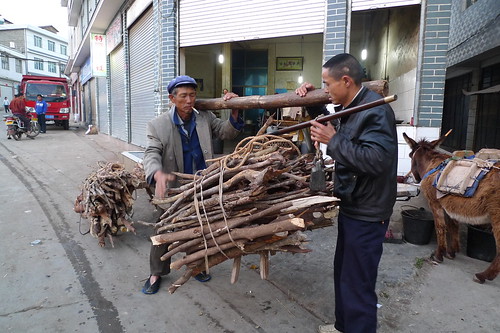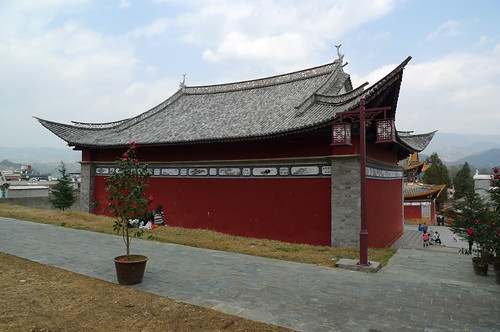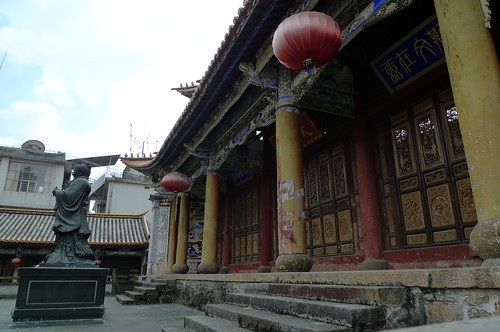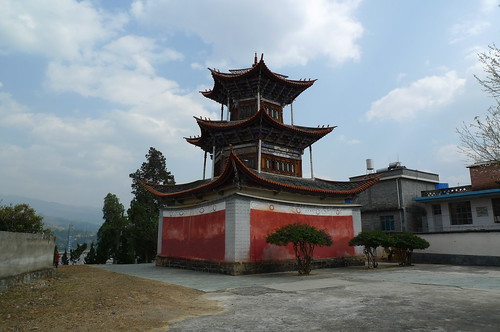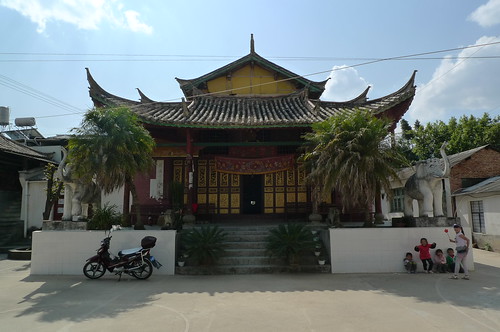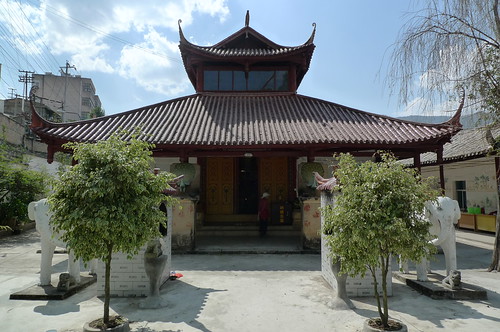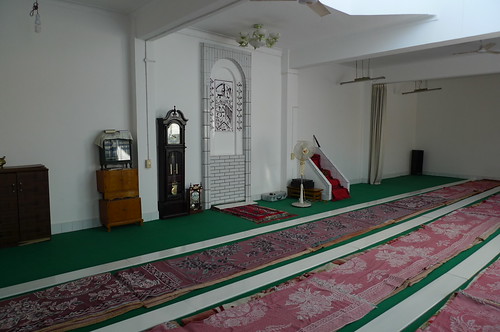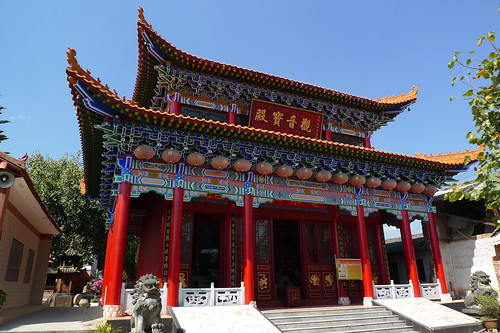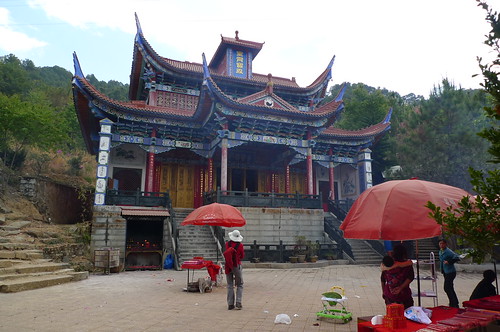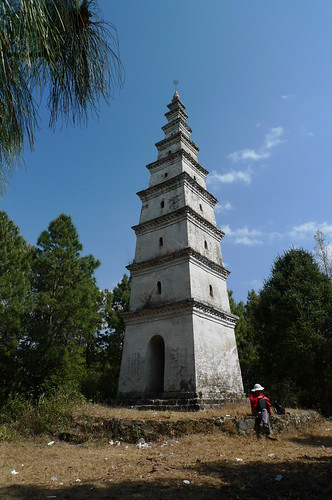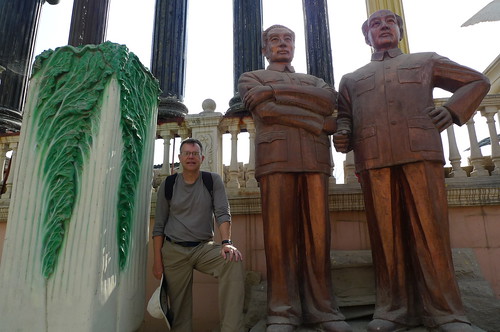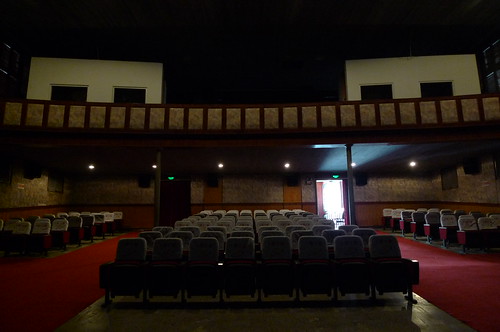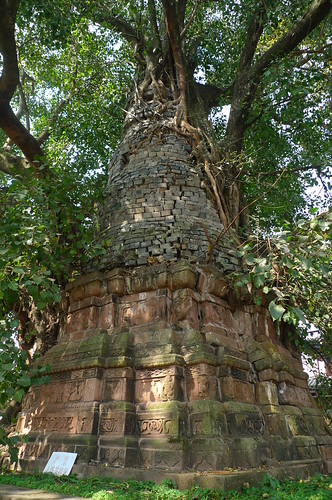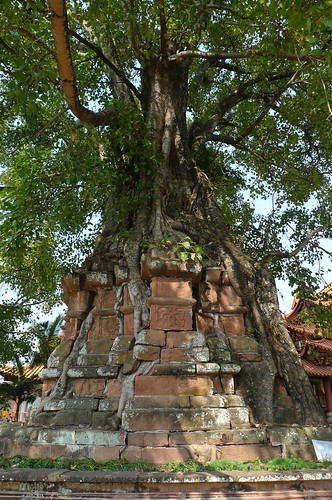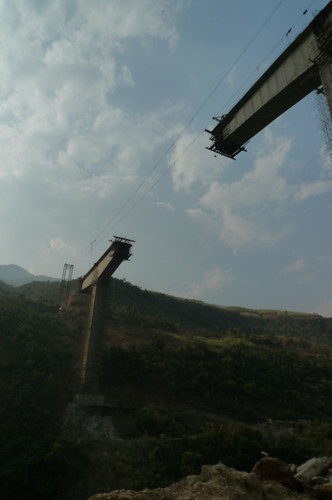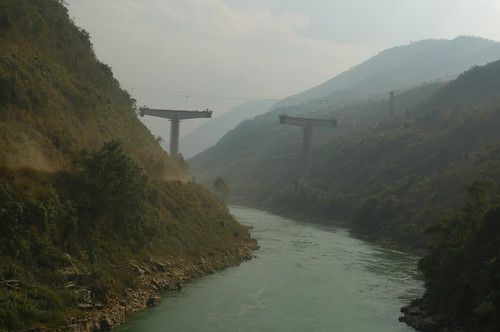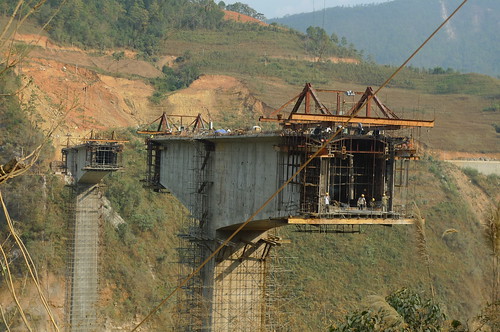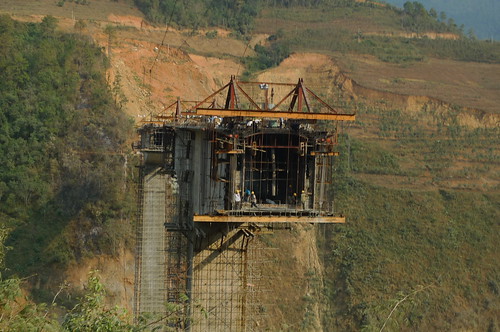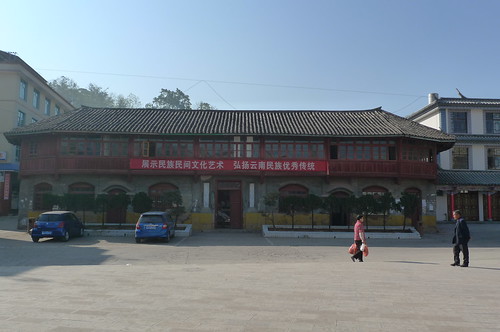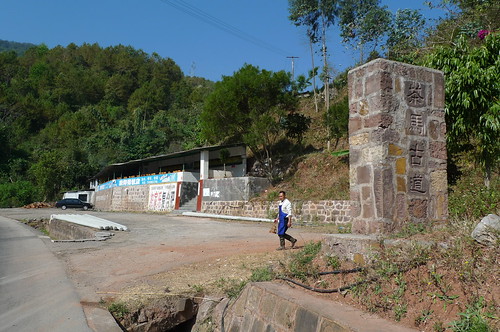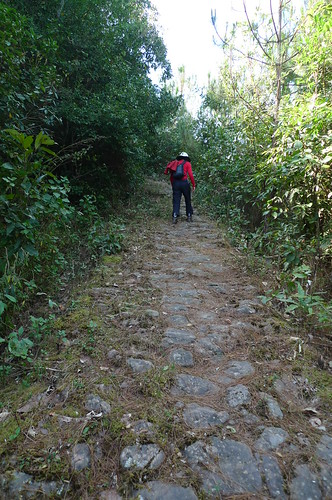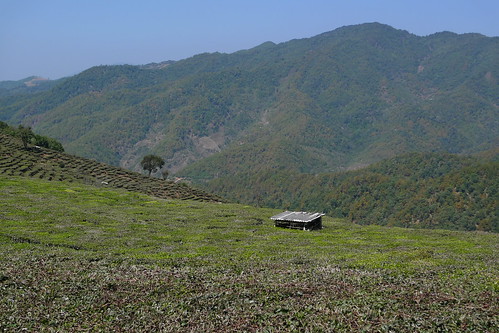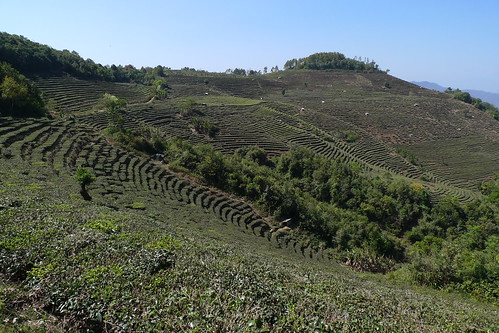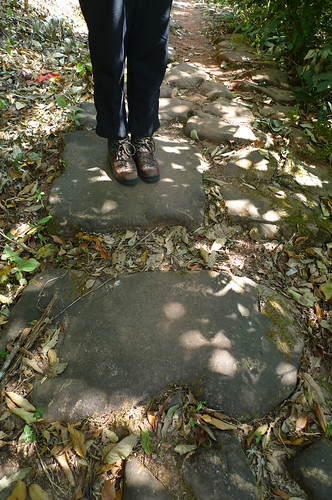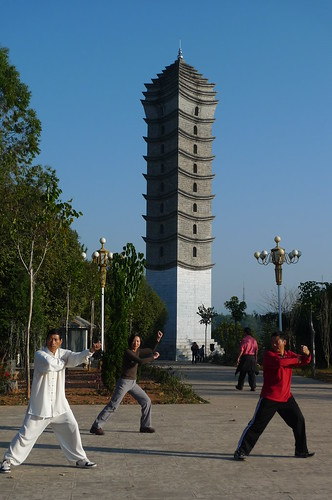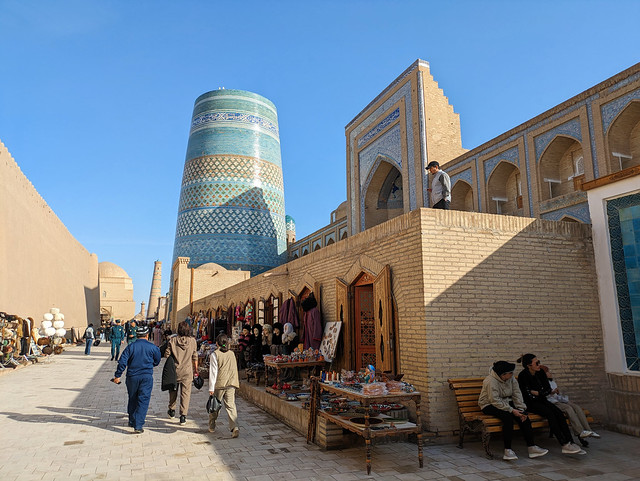From there, things got better. The bags of fish did not smell or leak. The drive northeast to Lushi was quite scenic featured terraces of green-gold wheat and another crossing of the Mekong. When the driver saw I had my camera out, he stopped on both sides of the new bridge so I could take photos. Sweet. The Mekong is dammed here and the resulting lake is not so scenic, although the gorge is quite deep.
Arriving in Lushi, things briefly took a turn for the worse. We had planned to walk the Tea Horse Trail in the afternoon, spend the night, check out Lushi Town the next morning and take the 1PM bus back to Fengqing. However the 1PM bus was full so we had to buy tickets on the 8AM bus and cram all our activities into one day. But, at the "recommended" hotel in town we scored a nice clean room with a view overlooking Lushi, and we were out hiking the Tea Horse Trail south-bound by 11:00.
We walked south, mostly uphill, for 3 hours to Tangfang Village at 2200 meters high, a so-called "stone village". Typical older Yunnan villages have courtyard buildings with tile roofs and walls made of mud bricks or fired clay bricks. However, the buildings in Tangfang have slate roofs and walls made of local stone. The slate roofs are really cool as the slabs of slate are irregular in shape.
Along the road the we had some great views over the terraces of flowering peas, green fava beans, and golden wheat; saw several "loaded" horses and donkeys, and met many friendly locals who said to us "sit for a rest", "take some water", or "walk slowly" as we passed by.
We turned around at 2PM after taking many photos of Tangfang village and arrived back in Lushi at 4:45 or so with plenty of daylight left to check out old Lushi which is considered to be one of the three last "untouched" old towns China. Untouched by tourism that's true. And there are hardly any new buildings in the old town where folks still have their stables next to or under their houses, and cook and heat with firewood. Running water? Not sure. But of course there is electricity and cell phones.
Finally, dinner at a restaurant that cooks with wood delivered by pack animals.
In case you just couldn't picture loading a bag of fish onto a bus.
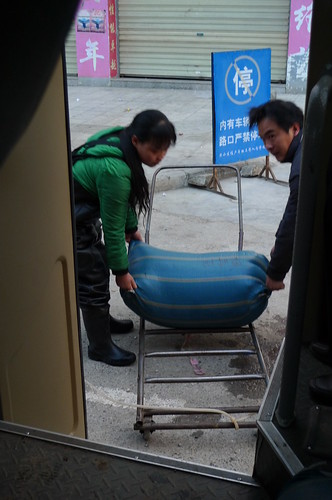
Bridge over the Mekong with a view down the new lake.
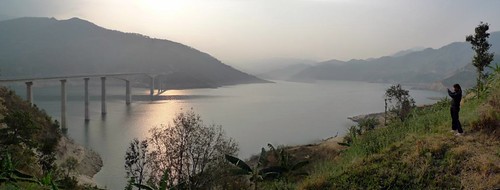
Pack animals taking goods into Lushi.

Just south of Lushi, this guy was watering his pigs. Hmmm.

House with slate roof.
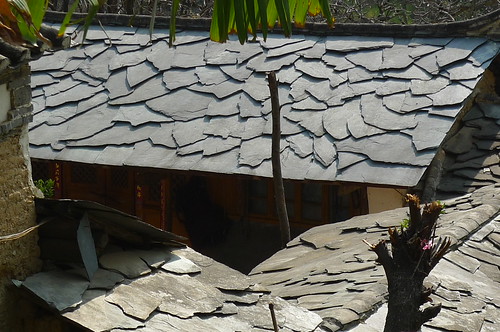
Sun-Ling on the Tea Horse Trail.
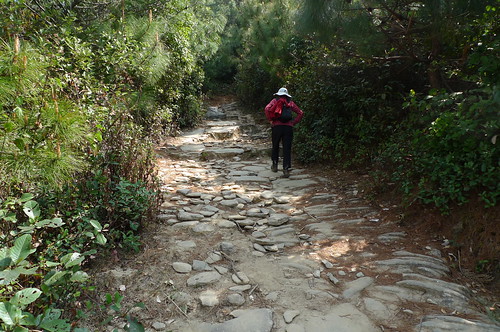
One of the courtyard stone houses on the edge of Tangfang.

Stonehouse in Tangfang wth beehives - the round things.
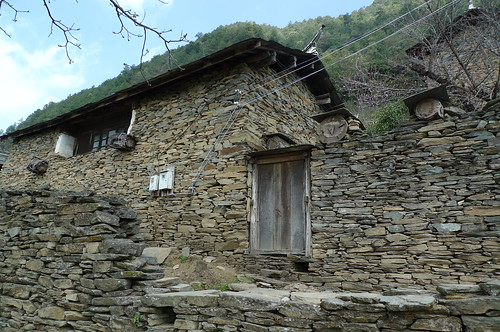
John standing on the Tea Horse Trail which goes right through the middle of Tangfang Village.

Tangfang.

Tangfang.
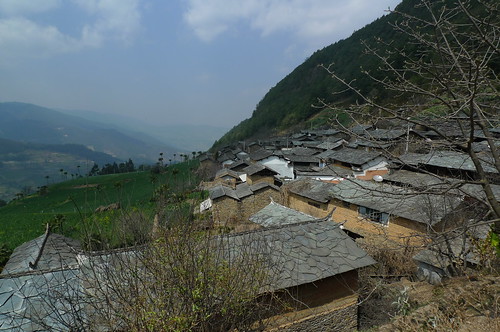
Woman wth basket of leaves and sticks - kindling.
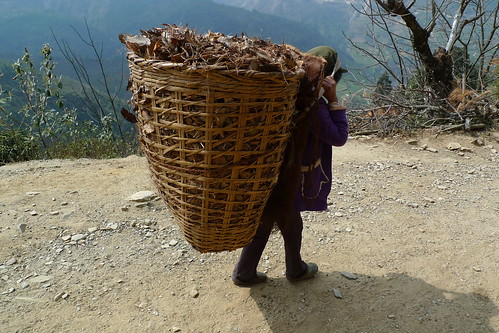
Tea Horse Trail just south of Fangtang heading towards the Mekong.

View of Lushi from the road in front of our hotel. Our room had bascially the same view but with a bunch of electrical wires.
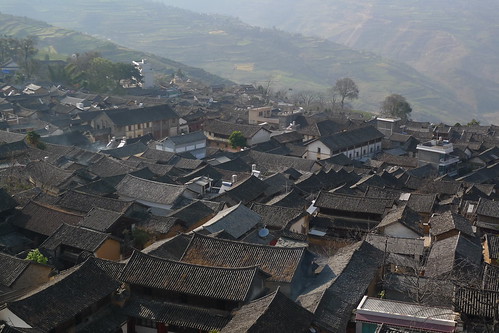
Woman with kindling "headed" down Lushi's mainstreet.

Main street, Lushi.

Stable underneath a house in downtown Lushi.
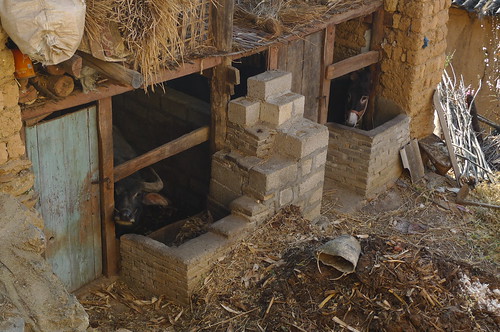
Making friends with the locals.

Lushi.
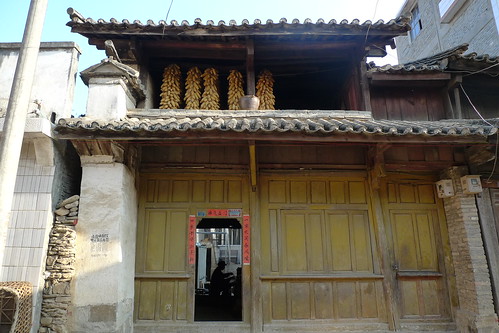
Weighing the firewood delivery.
